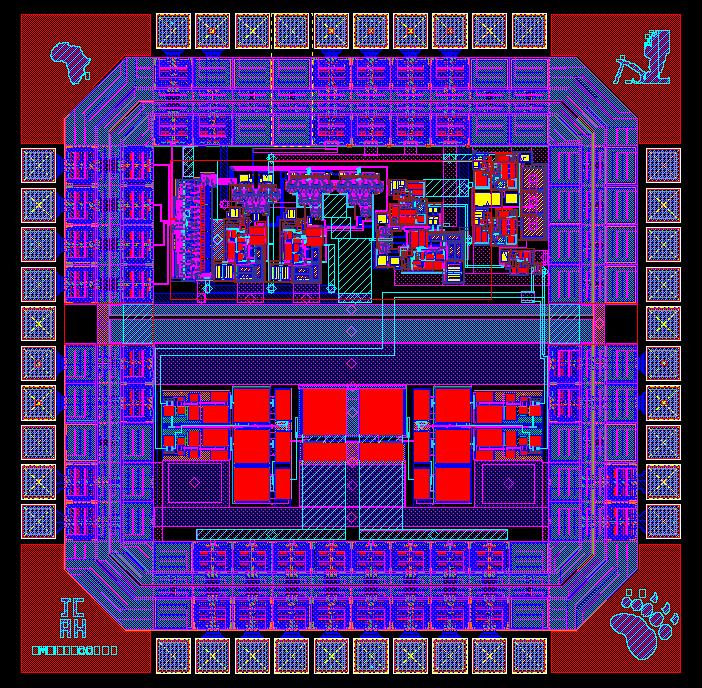Cookson and Hameer
Class D Audio Amplifier With On-chip H-bridge
A project for ECE 547 “VLSI Design”
Fall Semester 2002
Dept. of Electrical and Computer Engineering
University of Maine
Designed by
Jason Cookson and Abbas Hameer

There is always a push to create amplifiers that are more efficient. High efficiency translates to less power wasted, lower operating tempretures, and longer battery life in portable applications. For audio amplifiers, it is also imperative to have excellent sound quality by maintaining low distortion through the entire audio range.
This ECE 547 VLSI projects implements a Class D amplifier. The amplifier achieves high efficiency by using a pulse width modulation (PWM) scheme to convert the analog input into a stream of “pulses”. These pulses in turn control the transistors on an on-chip H-BRidge thus allowing current to flow through the load. The inputs to the circuit are stereo line-in audio, and the outputs are designed to drive an eight ohm speaker. Volume control has also been implemented as a five-bit digital number input.
The project report (PDF) contains a description of the project, details of the design and layout, and simulation and test results.
May 2003
